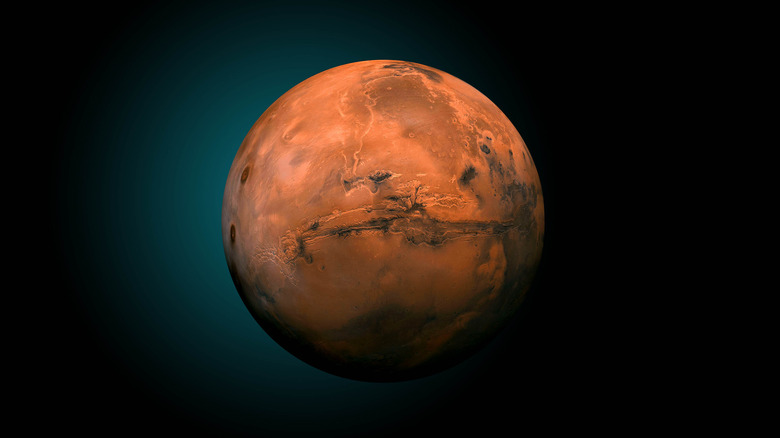Research Reveals How Earth Saved Itself From Becoming Like Mars
Mars might make an enticing possibility for future crewed space travel, but it's not a place you'd want to settle down. From its thin, carbon-dioxide-rich atmosphere to its freezing temperatures, not to mention all the radiation, it's an environment that's highly hostile to human life. But Mars and Earth could once have been very similar, and they only diverged into the wildly different places we see today over time. Now, researchers have found clues to how Earth avoided becoming a desolate wasteland like Mars, and it's all to do with the planet's interior.
Earth's secret weapon which makes it hospitable to life is its magnetosphere, which protects life on the ground from dangerous cosmic radiation. However, the Earth's magnetic field dipped massively in strength around 565 million years ago, dropping to just 10% of its strength today (via the University of Rochester). Fortunately for us, the field regained its strength before the Cambrian explosion, when a wide variety of new animal species emerged in a short time period.
Why exactly the magnetic field regained its strength has been an open question, but new research from scientists at the University of Rochester gives some clues.
The strengthening of the planet's magnetic field happened around the same time that the planet's solid inner core formed, and these two events seem to be connected.
"The inner core is tremendously important," said one of the authors of the research paper, John Tarduno. "Right before the inner core started to grow, the magnetic field was at the point of collapse, but as soon as the inner core started to grow, the field was regenerated."
Looking to ancient rocks for answers
Scientists know that Earth's magnetic field is created by the planet's outer core, in which liquid metal flows and creates electrical currents which produce the field. So they are interested in how the planet's interior evolved, but this is difficult to study.
To understand how the Earth's interior changed over time for this work, the researchers looked at very old minerals which have been shunted up to the planet's surface (via the University of Rochester). These contain magnetic particles which still hold information about the planet's magnetic field at the time they formed from a liquid into solid rock.
From this information, the researchers were able to determine that the magnetic field rebounded in strength around 550 million years ago, which is 15 million years after it dropped, and when the solid inner core is thought to have formed. This inner core "recharged" the outer core and boosted its magnetic field-generating ability.
"Because we constrained the inner core's age more accurately, we could explore the fact that the present-day inner core is actually composed of two parts," said Tarduno. "Plate tectonic movements on Earth's surface indirectly affected the inner core, and the history of these movements is imprinted deep within Earth in the inner core's structure."
Without the regeneration of Earth's magnetic field, it could have become like Mars, which lost its magnetic field over time, leaving it vulnerable to radiation. This eventually led to Mars losing its water. So be thankful for our planet's interior, which saved us from that fate.

